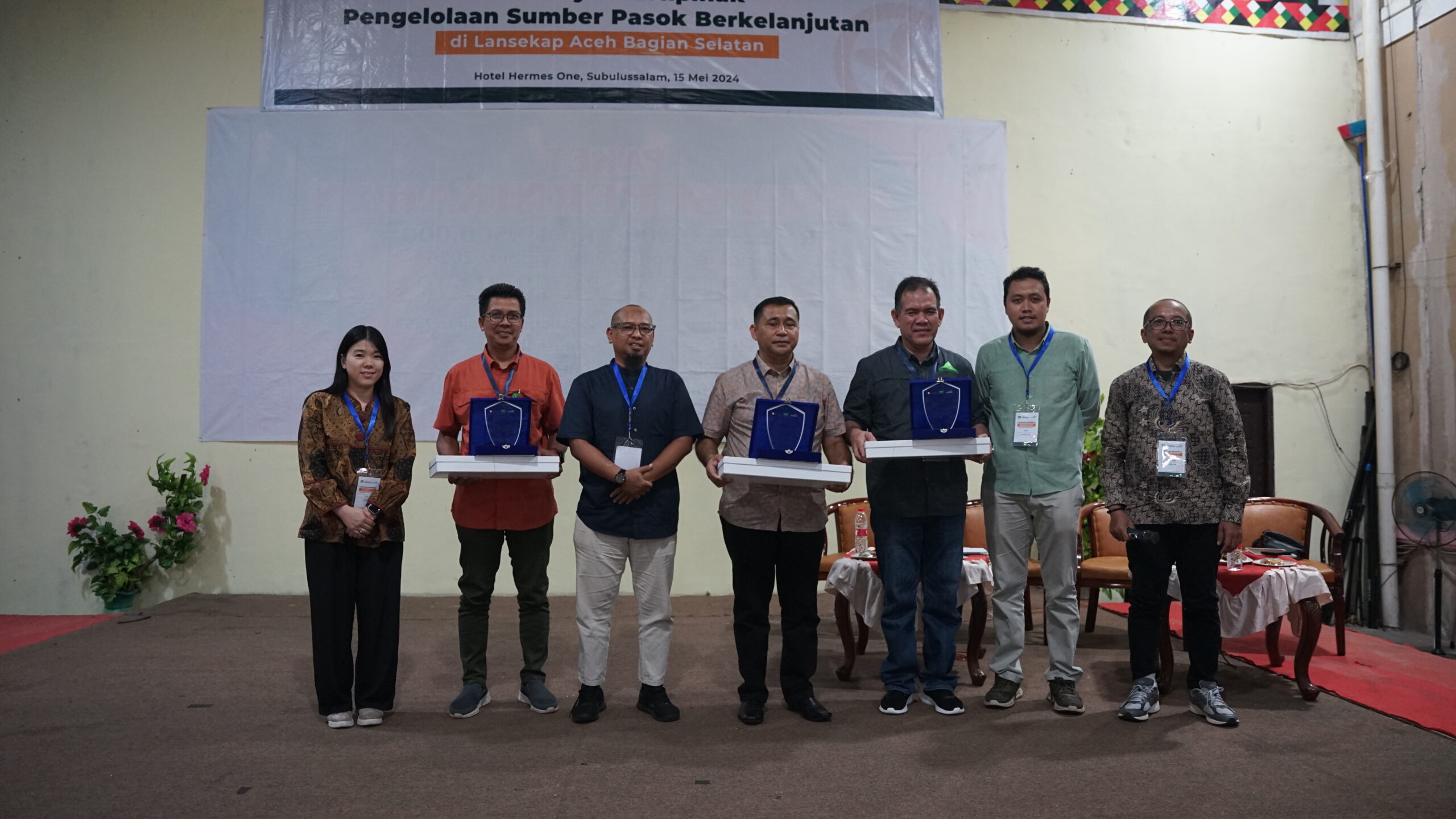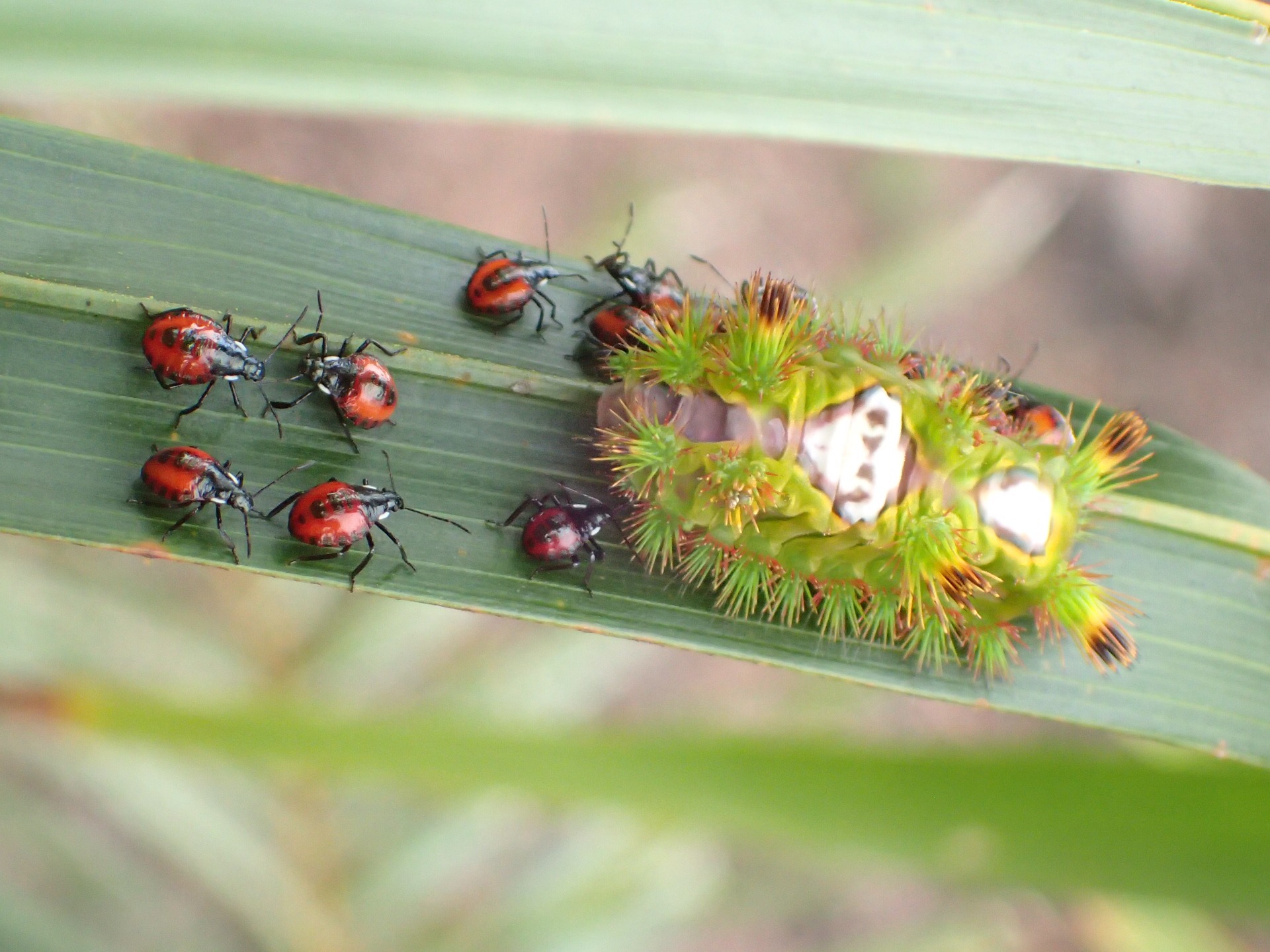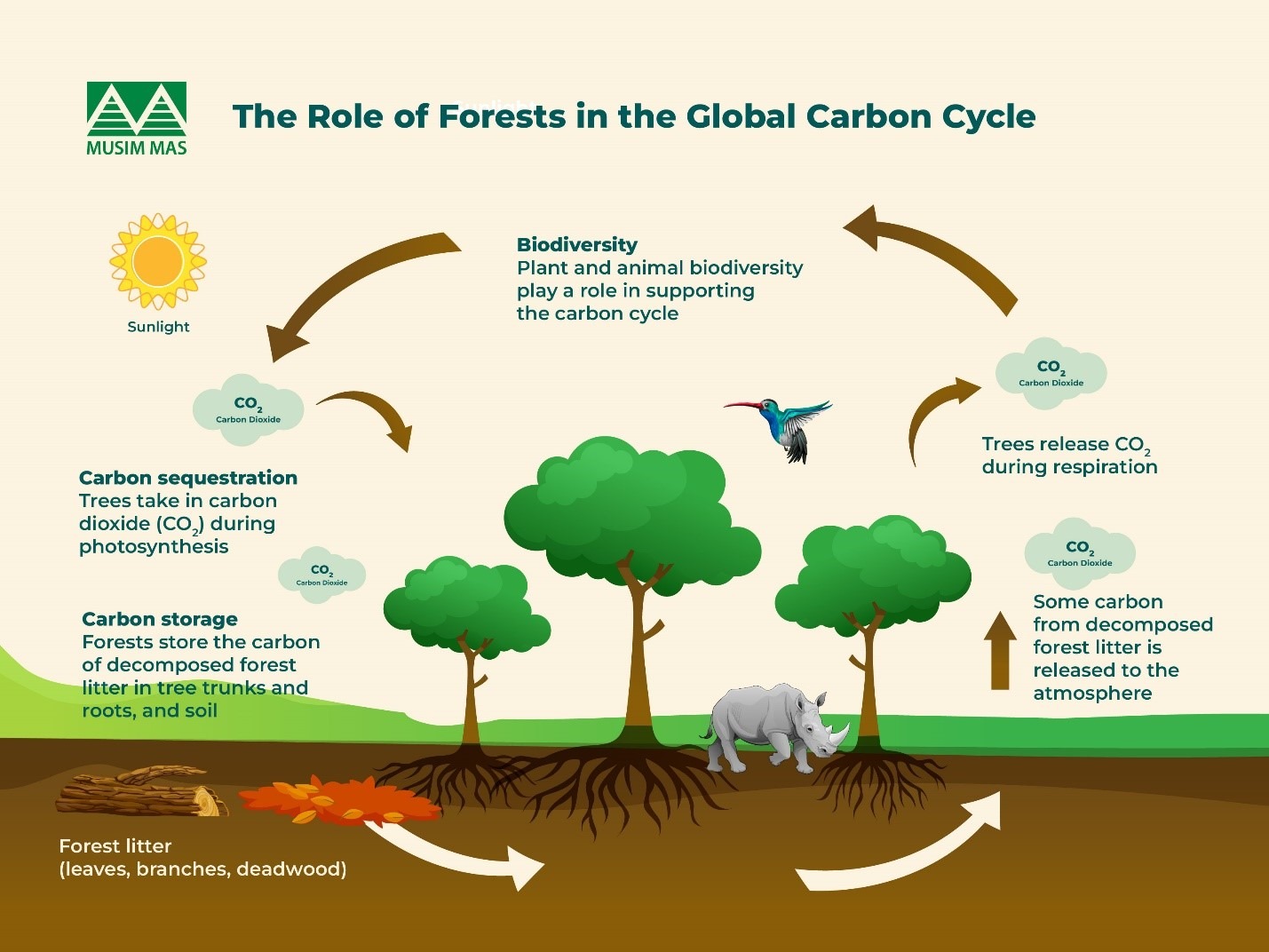By Tan Wei Rui
Two months into the industry, I was fortunate to be given the opportunity to participate in a learning journey organised by Conservation International (CI) to South Tapanuli, North Sumatra. Also on the trip were other civil society organisations and buyers. During the trip, we were introduced to CI’s social forestry programme for smallholder farmers and visited an oil palm Plantation managed by a fellow holding company. We were privileged to be hosted by the local district government.
Social Forestry at the centre of CI’s Sustainable Landscapes Partnership
Social forestry refers to the management and protection of forest and afforestation of barren, deforested land with the purpose of helping environmental, social and rural development.
CI participates in the Sustainable Landscapes Partnership – a multi-stakeholder platform comprising the Ministry of Forestry, local government, private sector and local community – to implement sustainable business models that foster green development. Smallholders who participate in the programme would be educated and trained on sustainable farming techniques, such as biological pest control methods, intercropping and optimum fertiliser application.
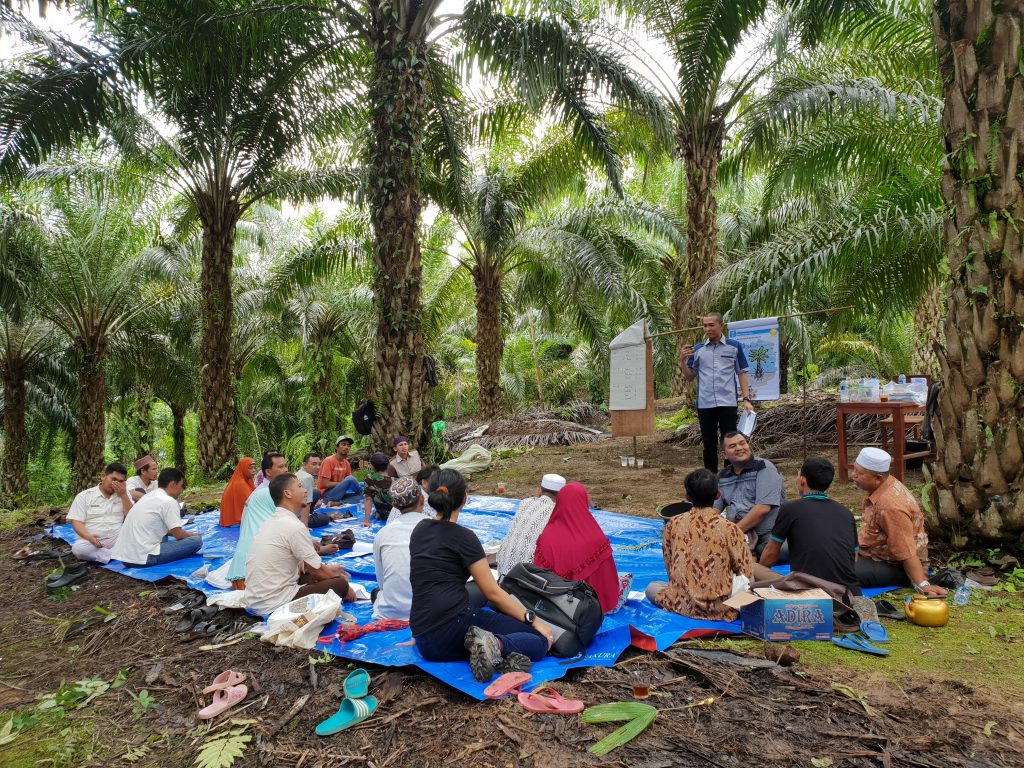
(Above) Independent Smallholders being educated about oil palm Agronomy by trainers from the local government and CI.
After their plantings come to fruition, CI would group them into associations to facilitate the land permit application process. Not only do these helps protect natural ecosystems, it also allows the Smallholders to fetch higher prices for their products.
As I watched the smallholder training in-action during the site visit, I was reminded of our company’s Indonesian Palm Oil Development for Smallholders programme, a collaboration with the International Finance Corporation (IFC) to build up the farming standards of independent Smallholders by providing the latter with training and education, as well as financial support.
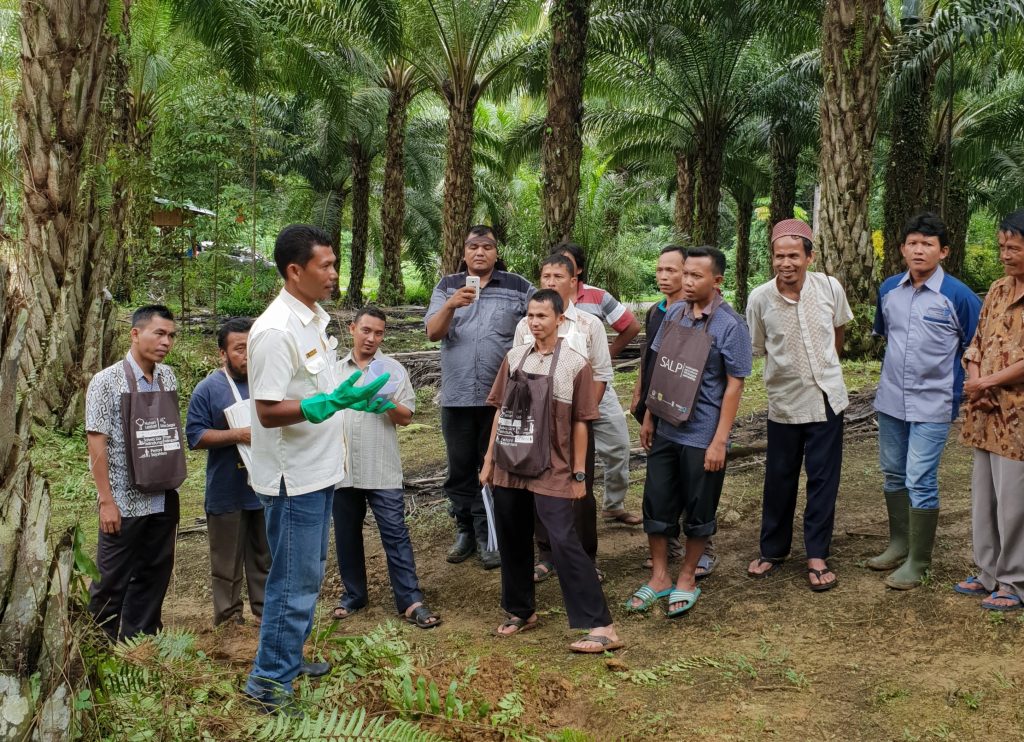
(Above) The trainer taught the Smallholders the correct way of applying fertiliser to the oil palm tree.
Sustainable Plantation Management
During our Plantation stay, we were briefed about the company’s sustainable agricultural practices, as well as shown around the Plantation and mill to observe how those principles had been integrated into their operations. There was a school and clinic within the Plantation compounds to provide education and basic healthcare services to the workers and their families.
As part of their environmental protection efforts, the company routinely monitors the groundwater level at their planted Peatland to ensure optimum water-table[1]. They also strive to reduce waste generated from the mill by composting the Palm Oil mill effluent (POME) and empty fruit bunches (EFB), then applying it back to the Plantation as fertiliser.
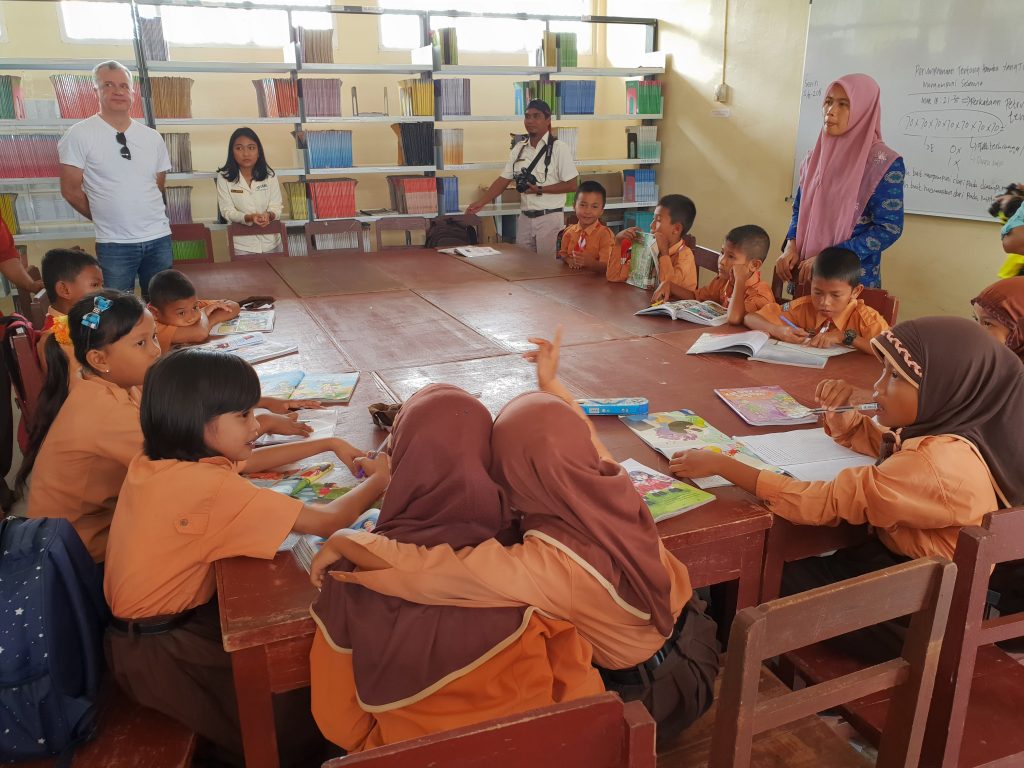
(Above) The children of Plantation workers are able to attend the school that is built within the Plantation ’s premises.
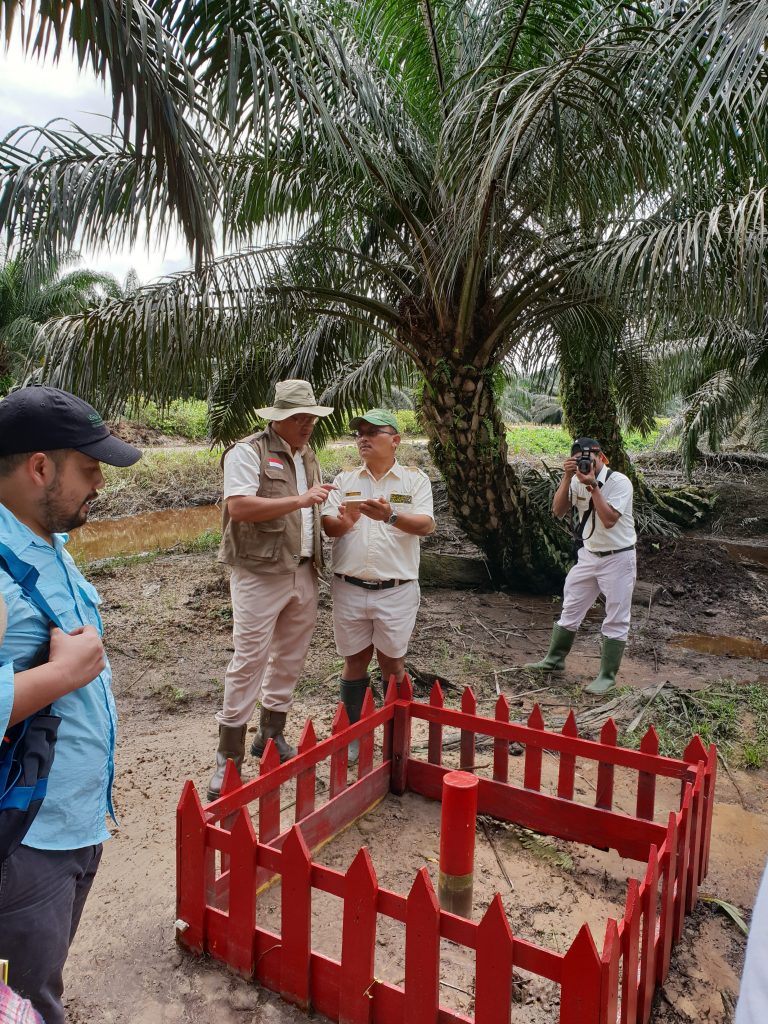
(Above) Tool to monitor the watertable of the Peatland.
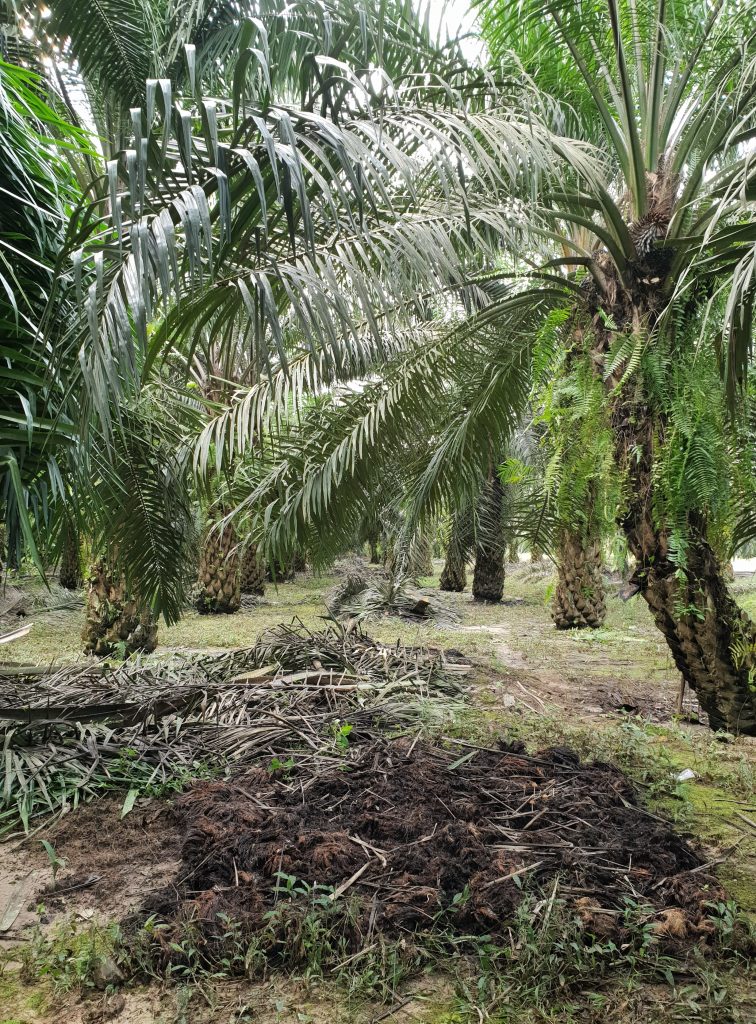
(Above) POME and EFB compost being applied between trees at the Plantation.
I imagined the same services provided and practices administered at our own plantations, and realised then and there that it does not matter whether we (as companies) are competitors, clients or partners. At the end of the day, we are all learning from each other and progressing together as an industry. With the new Principles and Criteria actualised at the recent RSPO RT16, I believe we could expect positive industry developments or breakthroughs on the sustainability frontier in the new year ahead.
| 1 | An optimum water table helps to slow down peat decomposition, which reduces CO2 emissions and minimise peat drying, while ensuring good oil palm growth and yield productivity. |







